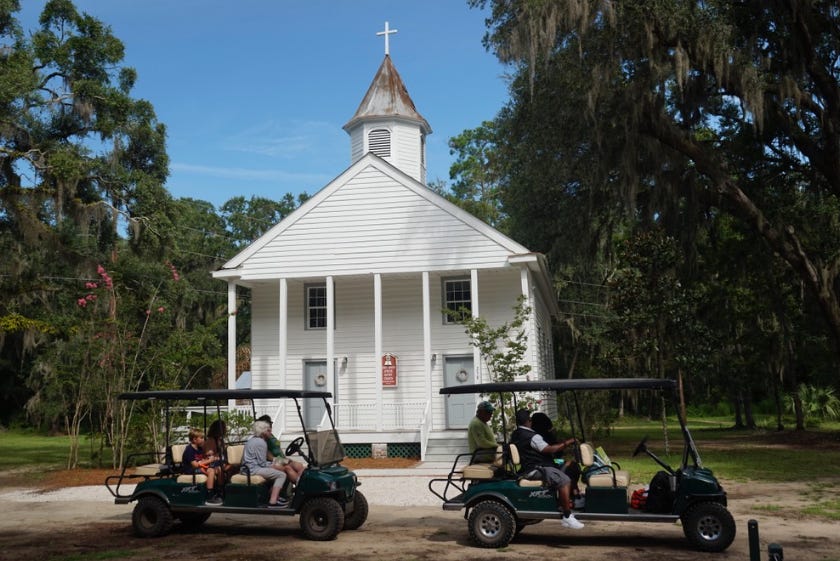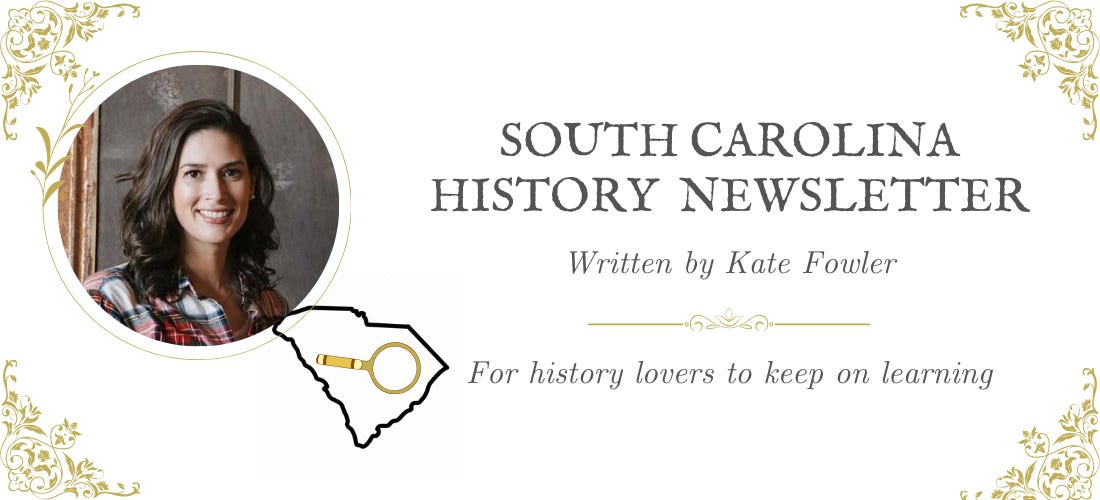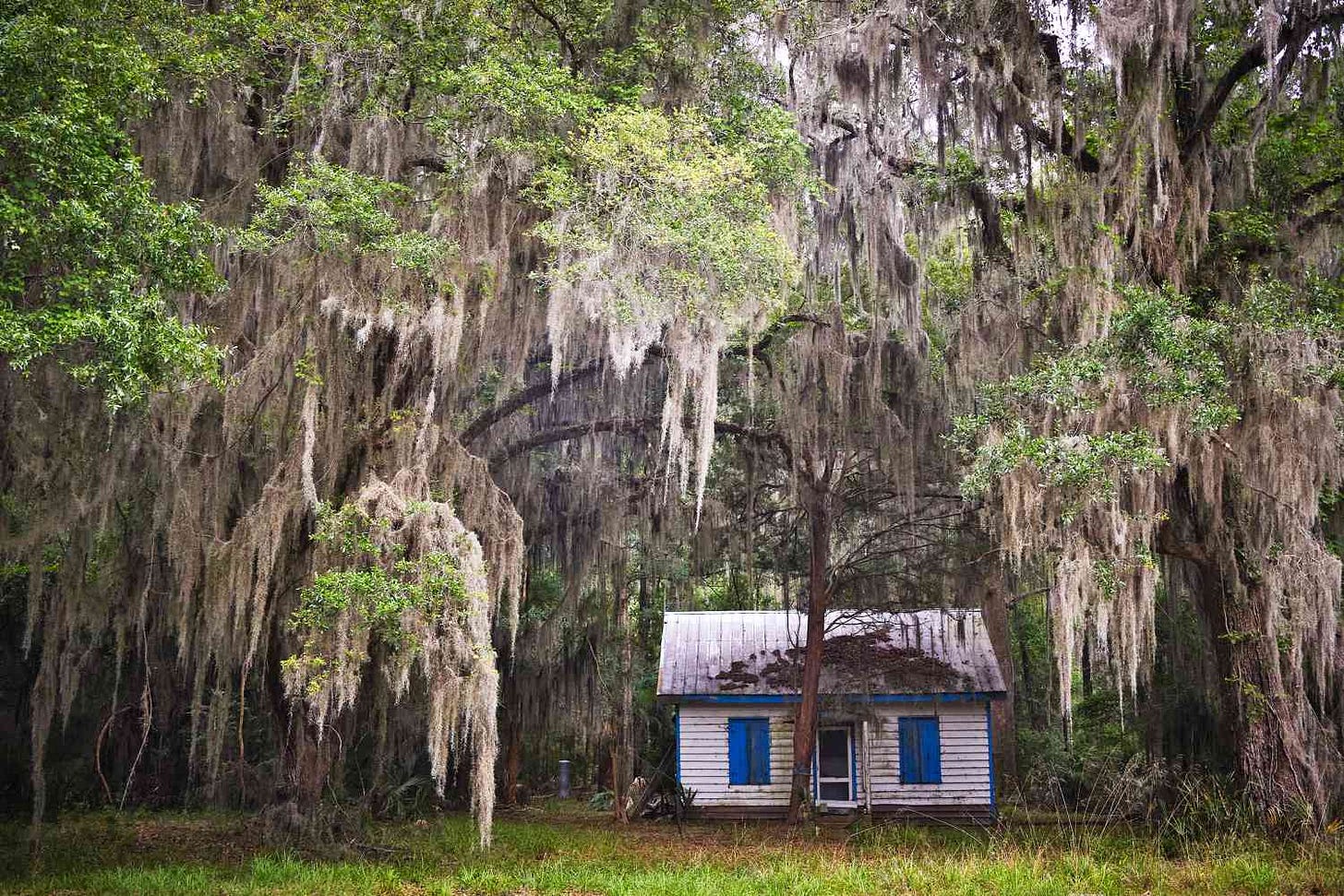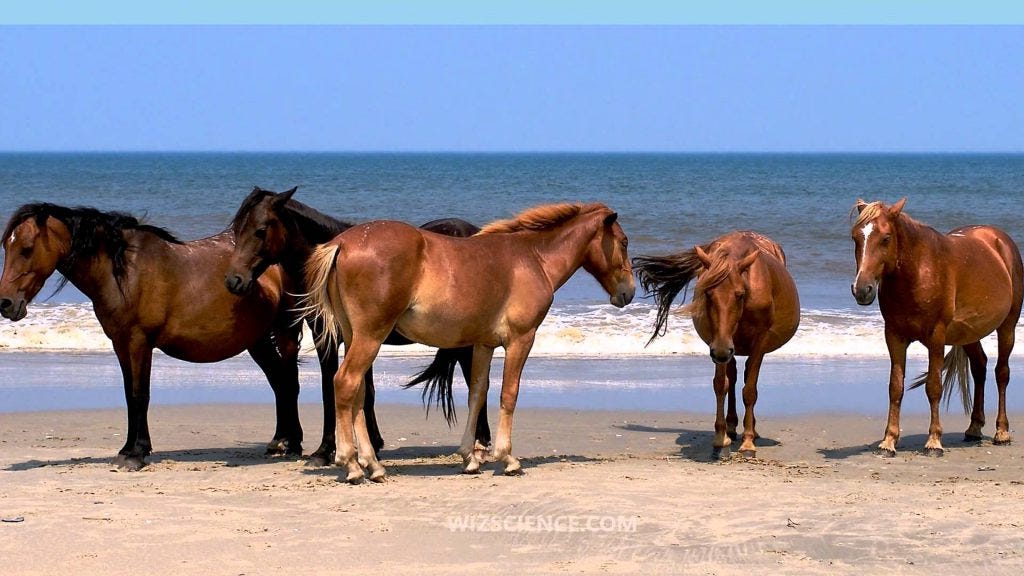#8: A community fish fry, a nearly extinct Lowcountry horse breed, and a Gullah hero keeping tradition alive
For South Carolina history lovers far and wide! Enjoy weekly SC history and upcoming SC historical events
Dear reader,
Welcome to Newsletter #9 of The South Carolina History Newsletter! I’m so happy you’re here.
I’d like to welcome “semleraj” “radertrish2” and “carolinehheppner” to our community! I’m so grateful you all decided to subscribe. It’s been about 1 week since I started this newsletter and it’s my passion project outside of my 9-5 job. Your support means the world to me! Also, a quick reminder for existing and new subscribers that I have challenged myself to write 100 newsletters in 100 days to get the Substack off the ground and populated with solid content. After the 100 day challenge, the newsletter will become weekly. I know we will all learn a lot together over the next 100 days! :)
I hope you enjoy today’s newsletter, and as always, please feel free to reply to this email with your ideas and suggestions for future newsletters. I’m only a click away. Additionally, please join us & keep the conversation going by becoming a member of our SC History Newsletter Facebook Community here! I can’t wait to meet you.
And now, let’s learn some South Carolina history!
Yours truly,
Kate
(Writing from Greenville, SC)
3 ➳ Upcoming SC History Events
To celebrate Black History Month, each newsletter in February highlights one Black History focused event. The Black History events will be listed first below.
While I have curated the following 3 events below to feature in today, please click here to visit my SC History Events Calendar that organizes all the events I have featured in the newsletter to date, as well as others I have discovered. Please let me know if you’d like to add an event to the list! Reply to this email or send me a note at schistorynewsletter@gmail.com.
I.
BLACK HISTORY MONTH HIGHLIGHT: Saturday, February 24th, 1:00 - 4:00 pm | Community Fish Fry: Celebrating Black History Month | Martin Luther King, Jr. Park, St. Helena Island, SC | FREE & Open to the public
II.
Saturday, March 2nd from 10:15 am - 3:00 pm | Artifact Identification Day & Grand Opening of our First Nations Exhibit Hall | Laurens County Museum | Laurens, SC | FREE & open to the public
“Demonstrations of Native American tool making, artifact identification, evidence of mastodons in South Carolina, and new exhibits will be part of the celebration on Saturday, March 2, 10 AM to 3 PM, at the Laurens County Museum. The First Nations Exhibit Hall at the Laurens County Museum has undergone a transformation and the community is invited to the grand opening. The Native American Artifact Identification Day and Exhibit Grand Opening is free and open to the public. The public is also welcome to bring in artifacts for identification.”

III.
February 19 - 23 at 12:00 pm each day | Hilton Head Seafood Festival Daufuskie Island History Experience | Daufuskie Island, SC | Tickets (in-person): $145 per person, fee includes round trip interpretive boat cruise, golf carts, tour destinations, USCG licensed Captain & Interpretive Historian
“Tucked between Hilton Head and the mainland, and accessible only by boat, Daufuskie is the island on 'the other side of the river' and a real gem. This is a trip back in time, providing a glimpse into a fascinating chapter of the Low Country history. Join us for a small-group tour of the 'undeveloped side' of Daufuskie with our interpretive guide and USCG Licensed Captain. Visit several one-of-a-kind places: the First Union African Baptist Church, the Praise House, the Mary Field's School (where author Pat Conroy taught) and several artisans' studios. Along the way, you will have the opportunity to stop and observe wildlife and historic points of interest. Daufuskie's earliest inhabitants included European settlers. Learn about the native Gullah culture with its African and French influences and their struggle to hold on to their 100 year old customs and way of life. Attire: Casual clothing that may get wet, sunscreen. Duration: 4.5 hours.”

2 ➳ SC History Fun Facts
Our fun facts today were inspired by the Daufuskie Island tour event I’ve posted above. I was intrigued to learn more…
I.
Did you know that their immunity to malaria and yellow fever helped enslaved West Africans on Daufuskie Island retain their traditions, language, and culture?
Daufuskie Island is one of the most beautiful and intriguing places off the South Carolina coast (see map here). It is located just southwest of Hilton Head Island.
The island’s history goes back thousands of years, and hunting artifacts from Native peoples have been found on the island from 9,000 years ago. In the 1500s, the first European settlers on the island were the Spanish, who allied with the Yemassee Indians to become the “dominant force in the area.” Then in the 1600s, the English began to explore the southern coast and settle on the land. Soon, they became a threat to the Spanish and Yemassee. Bloody skirmishes broke out amongst the various factions, with the English eventually driving out their enemies. Thus began an era of British Dominance on the island. During the Revolutionary War, Daufuskie was growing into an island of plantations, with cotton being one of the “most coveted crops.” Thankfully, the island remained unscathed during the war.
In the Post Revolutionary War era, Daufuskie Island thrived. Large plantation homes were built and the production of famous “Sea Island Cotton” flourished. It was during this time that large numbers of enslaved West Africans were brought to the island to farm the precious cotton. Though for 6 months of the year, the land was rife with malaria and yellow fever. Fear of sickness caused the plantation owners and their families to retreat inland, while the enslaved West Africans remained on Daufuskie, keeping their language, culture, and traditions in tact — isolated from white communities. Over time, the enslaved West Africans became known as the Gullahs or Geechees of the Lowcountry.
As the cotton industry grew in the years before the Civil War, there were 11 plantations on Daufuskie Island: Haig, Melrose, Oak Ridge, Bloody Point, Mongin, Maryfield and Oakley Hall. However, this thriving plantation era came to an abrupt end at the onset of the Civil War, when white plantation owners and their slaves were forced to flee, and their properties were confiscated and abandoned. But the enslaved West Africans and their families would return soon enough…
With the Emancipation Proclamation, a large population of freed slaves, who had previously worked on the island’s plantations, “returned to Daufuskie and purchased small tracts of land for themselves and their families or went to work for large landowners.” They also brought back with them their Gullah language and culture.
Isolated from the mainland, over the decades, Daufuskie Island has become a refuge of Gullah culture. The Gullah language is a “rhythmic blend of southern English and native African dialects” and can still be heard on Daufuskie Island today. The colors of the island also reflect the Gullah culture, and visitors will notice that the shutters of many homes are painted a light blue (known as “heaven blue”) that is believed to keep out the haints (evil spirits) from “entering through heaven-protected openings.” And speaking of heaven, the Gullah people believe that “a person’s soul and spirit are two different things.” After death, the soul goes to heaven, but the spirit remains on earth. Many Gullah cemeteries are located near water so that the spirits of the ancestors can travel back to Africa by sea.
Today, despite development and pressures of the modern world, the Historic District of Daufuskie and the Gullah culture have remained virtually unchanged on the island. Each year, the island celebrates Daufuskie Day in honor of Gullah heritage and culture. The entire island is also on the National Register of Historic Places.
II.
Did you know that one of the rarest breeds of horse in the world is bred & protected on Daufuskie Island?
The Carolina “Marsh Tacky” horse developed from Spanish breeds brought to Daufuskie Island and other coastal areas of South Carolina by the Spanish explorers and settlers in the 16th century. The horses were managed as “feral herds, rounded up by locals when horses were needed, and this tradition continued into the 20th century.” The breed was well-suited to maneuver through the swamps of the Lowcountry and was used by the forces of Francis Marion (“The Swamp Fox”) against the British in the American Revolution. After the Civil War, the Marsh Tacky horses were used by the Gullah communities on Daufuskie and other islands off the South Carolina shore for use in their fields and gardens. While the “Tacky” part of the breed’s name means “common” or “cheap”, these horses are known to be sturdy, calm, brave, and gentle — and have become an important part of Lowcountry culture. Today, the breed is at “critical/nearly extinct” levels, meaning that “there are fewer than 100 breeding mares in existence.” In 2010, a bill was signed into law that made the Carolina Marsh Tacky the official state horse of South Carolina. With the help of location organizations, such as the Daufuskie Marsh Tacky Society, who advocate for these fine horses, the breed is starting to make a comeback! If you visit Daufuskie Island, you can even have the pleasure of riding a Carolina Marsh Tacky on a trail ride!
1 ➳ Quote from an SC historical figure
I.
“I saw the deterioration of the Gullah culture, houses falling apart, the gravestones of the ancestors overgrown. Some stories were being passed down but not enough. I said, ‘This ain’t right. I’ve got to do something.’ And to all the naysayers who asked what I could possibly do, I said, ‘It only takes one person to start’…My grandmother’s Gullah culture was a big part of this island. The Gullahs built the school, raised money through their church, built a second church when the first burned down, and built the Oyster Union Society Hall in 1893, where they raised money. The Gullah houses were used to feed and help people, and all of the food was shared with the community. If you killed a hog, you shared the meat with everyone, knowing that it would be shared with you when your neighbor killed a hog. We’ve gotten too far away from that mentality.”
— Sallie Ann Robinson, a sixth-generation Gullah who grew up on Daufuskie Island. Ms. Robinson has dedicated her life to chronicling and sharing Gullah recipes, dialect, and folklore. She has authored numerous cookbooks, as well as a history book — all centered on the history of Daufuskie Island. Read more about Sallie Ann Robinson here.
Sources used in today’s newsletter:
“No Bridge = No Problem!” It’s what makes Daufuskie Island so unique.
One Woman on This Tiny Island Is Keeping Centuries-Old Culture Alive
I always want to improve my work. Answer the poll below to give me your review of today’s newsletter. I also welcome your suggestions for new content! Simply reply to this email with your ideas. Thank you!














